Why You Need Pickleball Eye Protection
If you're wondering why investing in quality eyewear for pickleball is so critical, consider that around 90% of eye injuries in sports can be prevented with proper protection. Fast-moving balls and close-quarters play make players of all levels susceptible to eye injuries. Acute injuries can lead to long-term complications, and for older adults, these risks are significantly heightened. This guide aims to prepare you for the challenges of pickleball while outlining the necessary protective measures, specifically focusing on suitable eyewear.
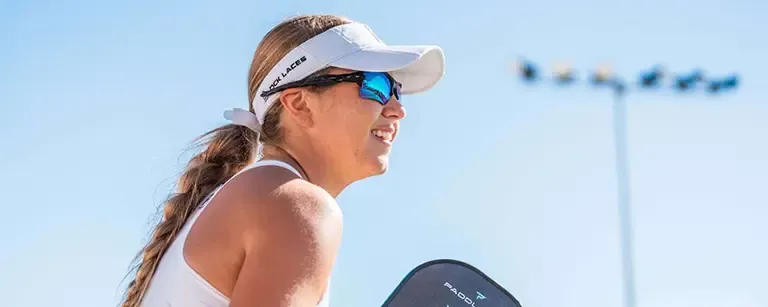
The Risks of Eye Injuries in Pickleball
The inherent risks associated with pickleball make eye protection absolutely essential. Players are often in tight proximity to one another and surrounded by fast-moving balls. Eye injuries can range from minor corneal abrasions to severe outcomes such as retinal detachment. Here are some of the most notable risks associated with the sport:
- Corneal abrasions: Occur when an object scratches the eye’s surface, often resulting from being struck by a ball or paddle.
- Retinal detachments: When the retina pulls away from its normal position, this can cause permanent vision loss if not treated promptly.
- Hyphema: This condition arises when damage causes bleeding in the anterior chamber of the eye, resulting in blurred vision and increased intraocular pressure.
Statistics reveal concerning numbers related to eye injuries in sports. Specifically, studies indicate that 40% of injuries in racquet sports affect the eyes. Given the sport's fast-paced and dynamic environment, the likelihood of contact and subsequent injury is statistically significant.
The value of protective eyewear cannot be overstated. Research shows that up to 90% of these types of injuries can be mitigated or avoided entirely with suitable goggles designed specifically for sports like pickleball. This protective measure is not just a suggestion; it's a necessity for anyone serious about playing this thrilling game.
Common Types of Pickleball Eye Injuries
Understanding the various types of eye injuries is crucial for appreciating the importance of wearing protective eyewear. Common injuries sustained can include:
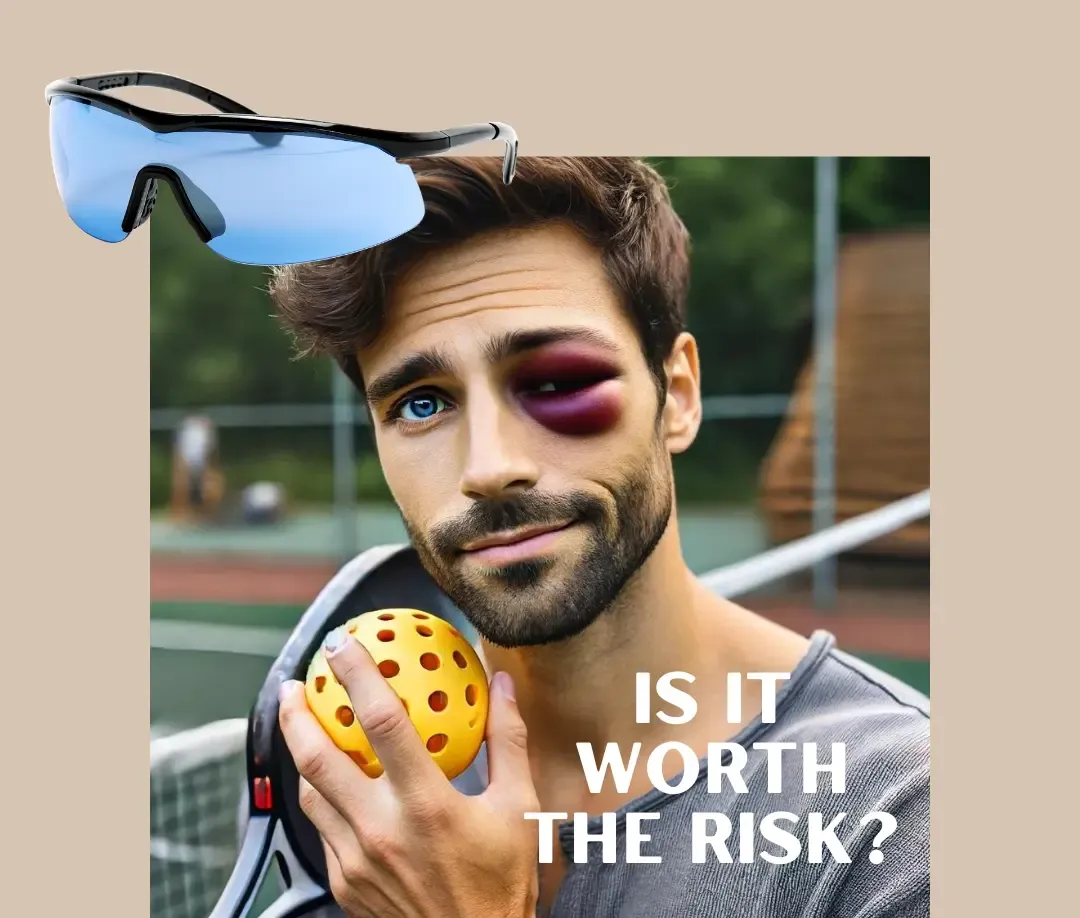
- Corneal Abrasions: Instantly painful and often caused by direct impact from a pickleball or paddle, these injuries can lead to long-term issues if not treated appropriately.
- Retinal Detachments: More severe yet less common, these injuries can lead to permanent vision loss. They generally result from blunt trauma to the eye.
- Hyphema: When the eye sustains a significant impact, bleeding can occur within the eye, causing significant pain and visual disturbances.
- Conjunctival Injuries: Injuries to the outermost layer of the eye can result from either direct contact or projectiles and may lead to irritation and discomfort.
- Blunt Trauma Effects: This can range from bruising to fractures of the eye socket, which can further complicate visual acuity and eye function.
The importance of protective eyewear is reinforced by the fact that various studies suggest a significant reduction in eye injuries when athletes wear proper eye gear. Ensuring you have the right glasses is essential for safeguarding against these risks.
The Rising Need for Protective Eyewear
As pickleball continues to grow exponentially, particularly among older adults, the demand for effective eye protection becomes increasingly important. Data collected from various pickleball leagues reveal:
- Over 40% of reported injuries occur in racquet sports, emphasizing the need for protective measures.
- Experts advocate for mandatory eye protection to reduce injury rates, especially in competitions where play is intense and the risk is higher.
The rise in eye injury cases has prompted discussions among players and organizations about implementing mandatory eye protection to safeguard athletes.
Comparative Safety Analysis: Outdoor vs. Indoor Play
| Aspect | Outdoor Play | Indoor Play |
|---|---|---|
| Visual Obstructions | Glare can be problematic | Better visibility indoors, but still need protection |
| Light Conditions | UV protection requirement | Less need for UV lenses, but still crucial for safety |
| Crowding & Movement Factors | Increased risk of clashes and high-speed impacts | Similar risks exist but often with less space |
Given these factors, it's crucial to address the patterns emerging from injury reports and prioritize protective eyewear. This need for eye safety arises not merely from anecdotal evidence but from a compounding array of data reflecting the growing intensity and popularity of pickleball.
Expert Opinions on Eye Protection
In the realm of sports safety, authorities strongly advocate for the use of protective eyewear. Dr. Jane Smith, an esteemed ophthalmologist, asserts that "eye injuries in sports like pickleball can be severe and life-altering." Equipped with extensive studies regarding sports-related eye injuries, she emphasizes the critical need for athletes, specifically those engaged in unpredictable and high-speed sports, to wear appropriate protective eyewear.
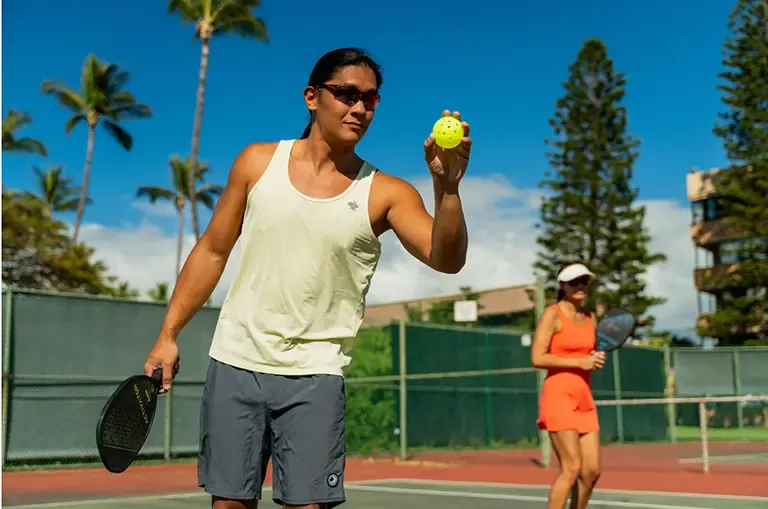
Insights from experts further validate the need for serious consideration of eye safety:
- Shatterproof Lenses: Essential for preventing catastrophic injuries, these lenses significantly reduce the risks associated with high-speed impacts.
- UV Protection: Such lenses are crucial, especially for outdoor players who may suffer long-term eye damage from daily sun exposure.
- Comfort Fit: A primary concern for athletes is ease of wear. Glasses should not hinder performance or distract focus while playing.
The majority of expert recommendations converge on the importance of adopting safety gear as the standard for all players, regardless of skill level.
Personal anecdotes speak volumes as well; many players share experiences where protective eyewear has spared them from serious injuries. From Tom’s close call to Mary’s cautious decision-making, stories of lucky escapes reinforce the need for eye protection.
Personal Experiences with Eye Injuries
Many pickleball enthusiasts have experienced firsthand the importance of eye protection. Take, for example, Mary, a passionate player who faced a serious injury after being struck in the eye during a heated match. This unfortunate incident required medical attention and reinforced her conviction about the necessity of wearing protective eyewear.
Similarly, Tom shares his experience: "I was practicing when a ball ricocheted unexpectedly and hit me squarely in the eye. Thankfully, I was wearing my safety glasses, which mitigated what could have been a severe injury."
Such stories are not uncommon in the pickleball community and highlight the significance of wearing suitable eyewear during matches. Real-life experiences reveal that while accidents can happen, the right choices can lead to safer outcomes.
Interestingly, testimonials from numerous players reinforce the idea that many injuries could have been avoided had they been wearing protective eyewear. As these accounts circulate among players, they advocate for a culture where safety gear is non-negotiable.
How to Choose the Best Pickleball Glasses
Given the high stakes associated with eye safety in pickleball, knowing how to choose the right pair of glasses is vital. With injuries posing such a substantial risk, proper eyewear can make a significant difference in your safety and enjoyment on the court.
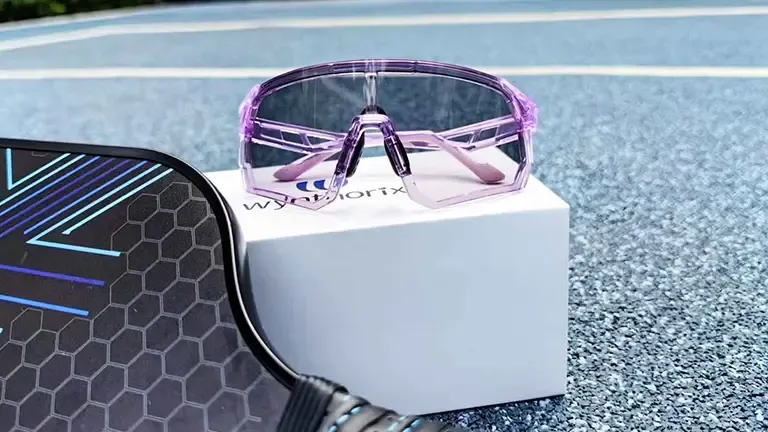
Impact Resistance
Impact resistance should be your first consideration when selecting the best pickleball glasses. The lenses you choose must meet relevant safety standards, such as:
-
ASTM F803: This standard specifically relates to eye protection for sports and recreation.
-
ANSI Z87.1: This certification provides assurance of the eyewear's robustness against high-velocity impacts.
Polycarbonate lenses are highly recommended for their lightweight structure and strong resistance, being five times more impact-resistant than traditional plastic lenses. By prioritizing impact resistance, you ensure that your eyewear can withstand the rigorous demands of pickleball play.
UV Protection
UV protection is another crucial feature to consider when selecting pickleball eyewear especially for outdoor play. Look for lenses that offer 100% UVA and UVB protection to shield your eyes from harmful rays and prevent complications such as cataracts over time.
A sun protection factor is not only about comfort in bright conditions; it is integral to your long-term eye health. Moreover, some models come with a mirror coating that further reduces glare ideal for bright days spent outside.
Anti-Fog Coating and Ventilation
During intense play, fogging can obstruct your vision and hinder performance. Opting for glasses with an anti-fog coating is essential, as it helps maintain clarity, allowing you to focus on the game ahead. This feature is especially valuable in humid or high-energy conditions where it's easy for moisture to build up on lenses.
Additionally, some glasses incorporate ventilation systems that promote airflow and help moisture escape, further reducing fogging. Having effective ventilation not only improves visibility but also contributes to comfort during prolonged play.
Scratch-Resistant Lenses
Protective eyewear should not only shield your eyes from impacts but also from scratches that can obscure vision over time. Opt for glasses that specifically highlight scratch-resistant coatings; these features will help maintain clear visibility and longevity of your eyewear, crucial for maintaining performance.
Pairing scratch resistance with vigilant care ensures that your eyewear remains effective and aesthetically pleasing even after extensive use on the court.
Fit and Comfort
Comfort is key when selecting eyewear for pickleball. Glasses should fit snugly against your face without gaps, ensuring they stay securely in place during vigorous activity. Features like:

- Adjustable nose pads: These allow for customization, ensuring that you achieve the perfect fit for your unique face shape.
- Wrap-around designs: These styles provide better peripheral coverage, which is essential during fast-paced gameplay.
Fashion is also a concern; ensure the frames are lightweight and made of flexible materials, promoting comfort and agility on the court.
Choosing an optimal fit means you can focus entirely on your game rather than adjusting errant glasses.
Lens Tint and Polarization
Selecting the right lens tint can profoundly impact your visibility during matches. For outdoor play, tints like amber, brown, or rose are preferable, as they enhance contrast and depth perception, making it easier to track the ball.
Conversely, for indoor play, clear lenses are optimal for maximum clarity under artificial lights. Players should avoid polarized lenses, as they may interfere with depth perception required for effective gameplay.
Prescription Options
If you're among the many players who need prescription lenses, don’t fret there are various stylish and functional options available today. Many manufacturers offer the ability to customize their protective eyewear with prescription lenses, ensuring you get both clarity and safety.
Polycarbonate materials are often used for these prescription options, maintaining the same level of impact resistance required for pickleball while correcting for vision. Make sure to explore brands and models that accommodate your specific vision needs.
Understanding Safety Standards
Being informed about safety standards is vital when choosing eyewear for pickleball. Here are the recognized safety ratings to seek out:
- ANSI Z87.1: A mark for general safety eyewear, certifying frames and lenses that can withstand impact.
- ASTM F803: An essential standard specifically aimed at sports eyewear.
Understanding safety certification tests is crucial; they provide assurance that the eyewear you select meets the rigorous demands associated with high-speed sports.
Exploring Lens Technologies
Modern lens technologies are evolving; they combine advanced materials, coatings, and innovative designs to elevate the performance and safety of protective eyewear. Look for the following:
- Anti-fog technology to maintain clarity during humid conditions.
- Scratch-resistant coatings to ensure durability and visual quality.
- UV protection to shield against harmful sun exposure when playing outdoors.
Understanding these technologies will help inform your choice of glasses, ensuring the protection you select meets your playing conditions and personal comfort levels.
Alternatives to Traditional Pickleball Glasses
While traditional eyewear options for pickleball are essential, there are various alternatives to consider that still provide eye protection and comfort during gameplay.
Visors and Hats with Shields
Visors can be a stylish alternative to glasses that provide some sun protection while allowing for ventilation. Many pickleball players opt for visors to combat glare on sunny days without obscuring their field of vision.
Performance hats, often constructed with moisture-wicking fabrics, provide additional shielding from sunlight, coupled with adequate airflow to keep players comfortable. The GearTOP Wide Brim Sun Hat is an excellent option, featuring UPF protection to safeguard against harmful rays.
Proper Fit, Care, and Maintenance
Having the right fit, alongside proper care and maintenance, is integral to enjoying long-lasting performance from your pickleball eyewear.
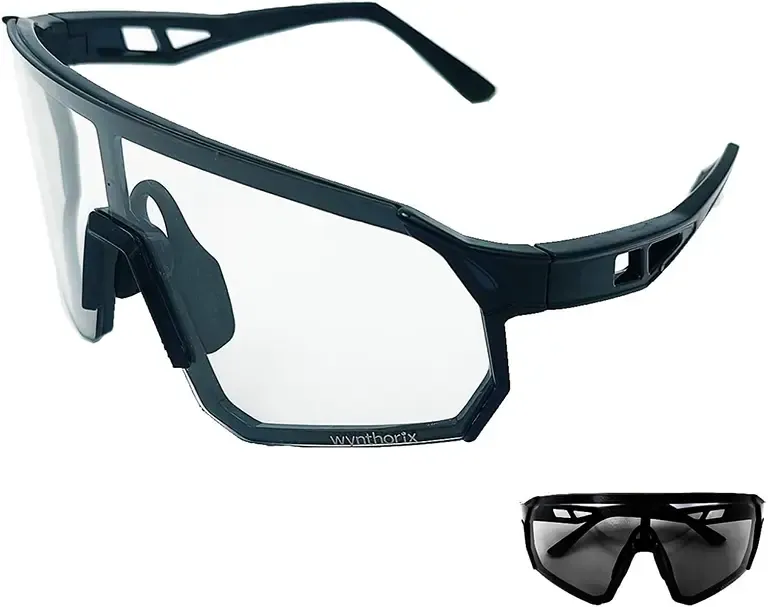
Ensuring a Secure and Comfortable Fit
Safety and comfort go hand in hand when selecting the best pickleball glasses. The eyewear should sit snugly on your face to avoid slipping during intense matches. Features to lookout for include adjustable nose pads and flexible temple tips to customize fit and minimize discomfort.
A good wrap-around style can also provide ample peripheral coverage. It’s a balance of fit and security that allows you to operate confidently on the court.
Maintaining Your Eyewear
Taking proper care of your eyewear will ensure longevity and peak performance. Regularly clean your lenses using a microfiber cloth to avoid scratches. Also, consider:
-
Storing glasses in a hard case when not in use to prevent accidental damage.
-
Avoid harsh chemicals that could damage coatings on the lenses.
Following these maintenance tips can prolong the life of your eyewear, maintaining its effectiveness on the court.
Conclusion
Navigating the world of protective eyewear for pickleball can be overwhelming, but it’s an essential task for any player looking to ensure their safety and enhance their performance. Understanding the various types of eye injuries, the importance of impact resistance, UV protection, and proper fit can significantly influence your choice of eyewear. Protective measures are not simply recommendations but necessities that could easily prevent severe injuries.
Whether you opt for traditional glasses or alternative methods like visors and hats, taking the time to select the right equipment tailored to your needs elevates your confidence and performance on the court. Prioritize eye safety, and remember investing in quality pickleball glasses is investing in your vision and overall gameplay.
Frequently Asked Questions (FAQ)
Understanding that you're not alone in seeking clarity about eye protection can help ease your concerns. Many pickleball enthusiasts have similar questions regarding eyewear safety and options.
What’s the difference between sports sunglasses and safety eyewear?
The primary difference lies in their design and intended purpose. Sports sunglasses are designed for outdoor activities, providing UV protection and glare reduction. They feature a snug fit and often include features like interchangeable lenses for various conditions. In contrast, safety eyewear primarily protects against physical injuries, meeting specific safety standards for impact resistance but may lack aesthetic considerations.
Can I wear prescription glasses for pickleball?
Yes, but traditional prescription glasses may not offer the necessary protection. Opting for prescription sports glasses designed specifically for high-velocity sports is advised. These glasses combine vision correction with enhanced safety, allowing players to focus on the game.
Should I wear a strap with my eyewear?
Wearing a strap is advisable in many situations, particularly during intense play. Straps help keep glasses in place, ensuring your vision remains unobstructed and focused on the game. Many sports frames accommodate a strap for added security.
What tinted color is best for pickleball?
For outdoor play, tinted lenses in colors like amber, brown, or rose provide enhanced contrast, assisting with ball visibility. For indoor play, clear lenses are preferred for optimal clarity, with some players benefiting from light tints like orange for improved contrast against court surfaces.






























